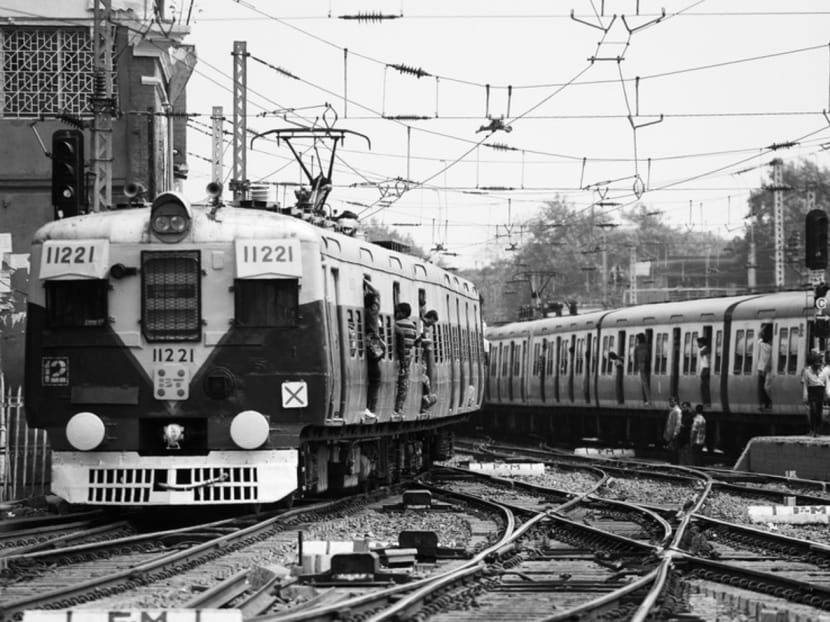Making a late bid to make it in India
To get to the industrial estates on the outskirts of India’s capital, the best way is by Delhi Metro, since the broad highways closer to the centre of the city soon turn into dirt tracks. Beyond the buildings are dusty fields through which the occasional water buffalo wanders.

When the Ministry of Railroads recently awarded contracts to the private sector to make locomotives again, the beneficiaries were foreign companies. Local public sector groups were uncompetitive after the government decided decades ago that public sector entities should make locomotives instead. Photo: AFP
To get to the industrial estates on the outskirts of India’s capital, the best way is by Delhi Metro, since the broad highways closer to the centre of the city soon turn into dirt tracks. Beyond the buildings are dusty fields through which the occasional water buffalo wanders.
Visitors who expect huge factories in grandly named places like the Mangolpuri Industrial Area must quickly scale down their expectations. Most establishments take up a single floor of the three-storey buildings and have only a handful of machines. Many of these are bought third-hand, and are only semi-automatic or hand operated. Their few high-tech automatic machines are often refurbished second-hand imports. Indeed, there is little that is large scale about Indian manufacturing.
But the country has belatedly discovered that it needs manufacturing to provide jobs for its school leavers and create work for migrants from the countryside.
Today, because India is so weak in making even simple products, a country with a quarter of the world’s population accounts for only 2 per cent of world trade. However, even allowing for China’s dominance, “there is scope for India to be part of the global value chain and be part of the supply chain linkages”, argues Mr Tharman Shanmugaratnam, Deputy Prime Minister of Singapore.
India’s realisation that providing low-end services is not enough economically has led Prime Minister Narendra Modi to launch his “Make in India” campaign and related crusades. For the recent Indian Maritime Forum, Mumbai was plastered with billboards urging readers stuck in traffic jams to “Make your boat in India”.
One fear is that it may be too late for Indian manufacturing. A visit to Mangolpuri and neighbouring Bawana Industrial Area, with its 16,000 very small enterprises, shows just how challenging Make in India will be.
“After decades of government regulation, there are no economies of scale in India,” says Mr Kamal Kapur, who makes switched mode power supplies and laptop chargers. “Since independence, the government has feared to let the private sector become big. We have lost so much time.”
A Tata Group division that once made locomotives is a case in point. Decades ago, the government decided that public sector entities should make locomotives instead, and Tata abandoned its business. So when the Ministry of Railroads recently awarded contracts to the private sector to make locomotives again, the beneficiaries were foreign companies, including a joint venture between GE and Alstom. Local public sector groups were uncompetitive.
Mr Kapur actually began his business not as a maker but as an importer of parts from Chinese factories offering economies of scale, technology and low prices. “The whole world comes to Shenzhen,” Mr Kapur notes. “I can buy a fake integrated circuit at half the price and the quality from China is as good as a Fairchild IC from the US. They make much more complex ICs than we Indians can make.”
Why then did Mr Kapur shift from importing from China to essentially reinventing the wheel in India? Much of his explanation has to do with the obstacles that befuddle foreign businesses operating in India.
One big challenge came from dealing with Indian customs. Its charges nullified the original price advantage of Chinese-made goods. “Customs is a big pain unless you go the under-the-table route,” Mr Kapur says. Consignments from China were held up for weeks. In some cases the duties and penalties exceeded the value of the shipment, leaving Mr Kapur to abandon the imported parts.
Importing also became impractical over the long term because transportation in India is both costly and slow; the average freight train speed is 25kmh.
Still, the transition to locally sourced parts was not easy. It took Mr Kapur 18 months to find the right suppliers for some of the parts he required, such as printed circuit boards and plastic injection moulds.
Nevertheless, for all the difficulties and the huge gap between Chinese and Indian manufacturing, it is an effort worth making. Even when a foreign company wins the contract to produce the locomotives for the Railways Ministry, the project will generate jobs in the depressed northern state of Bihar and have multiplier effects.
It is late, but not too late.
ABOUT THE AUTHOR
Henny Sender is the chief correspondent for international finance at Financial Times






